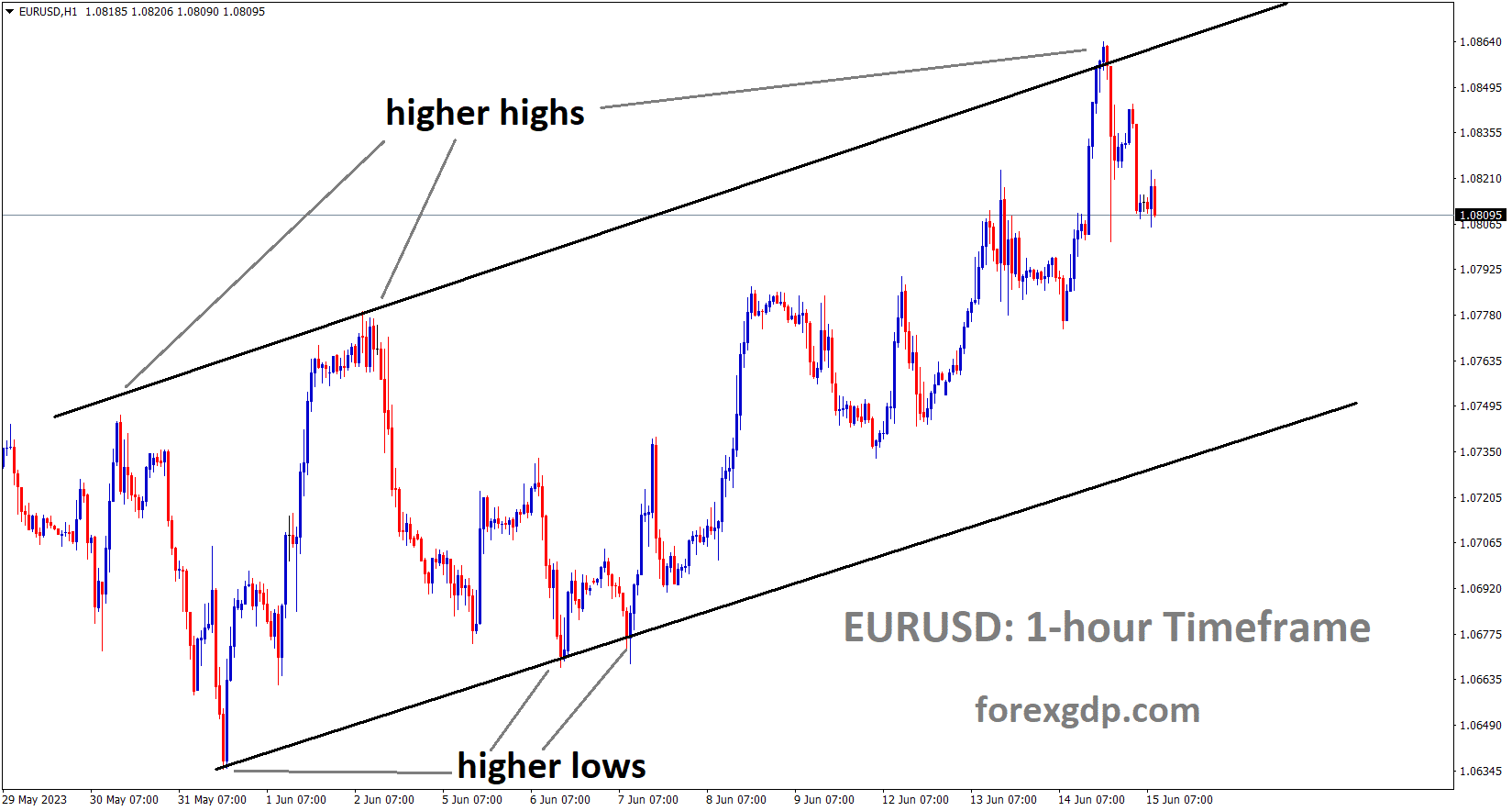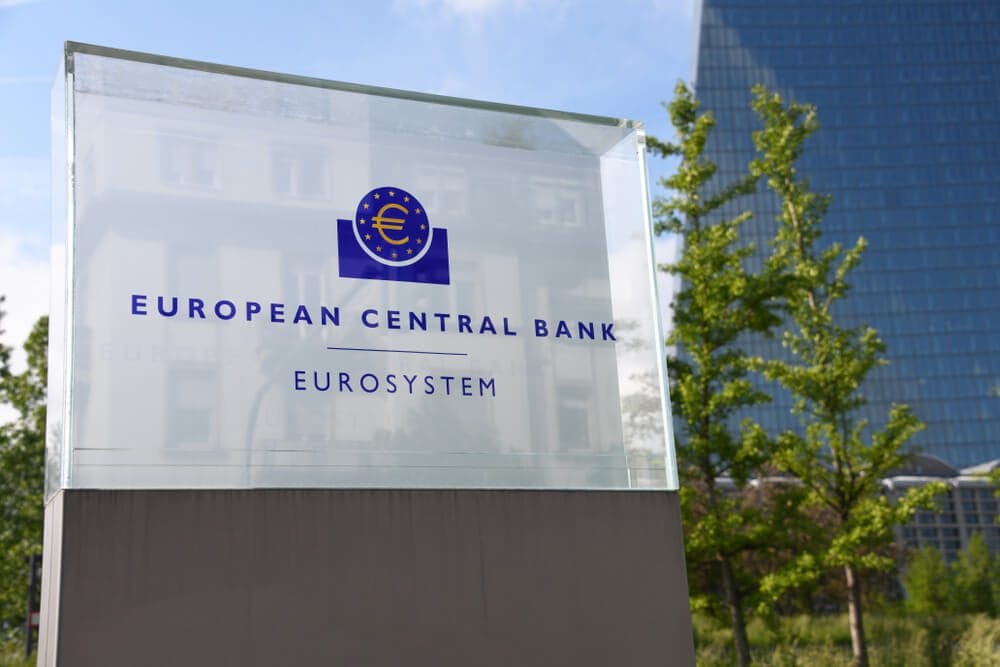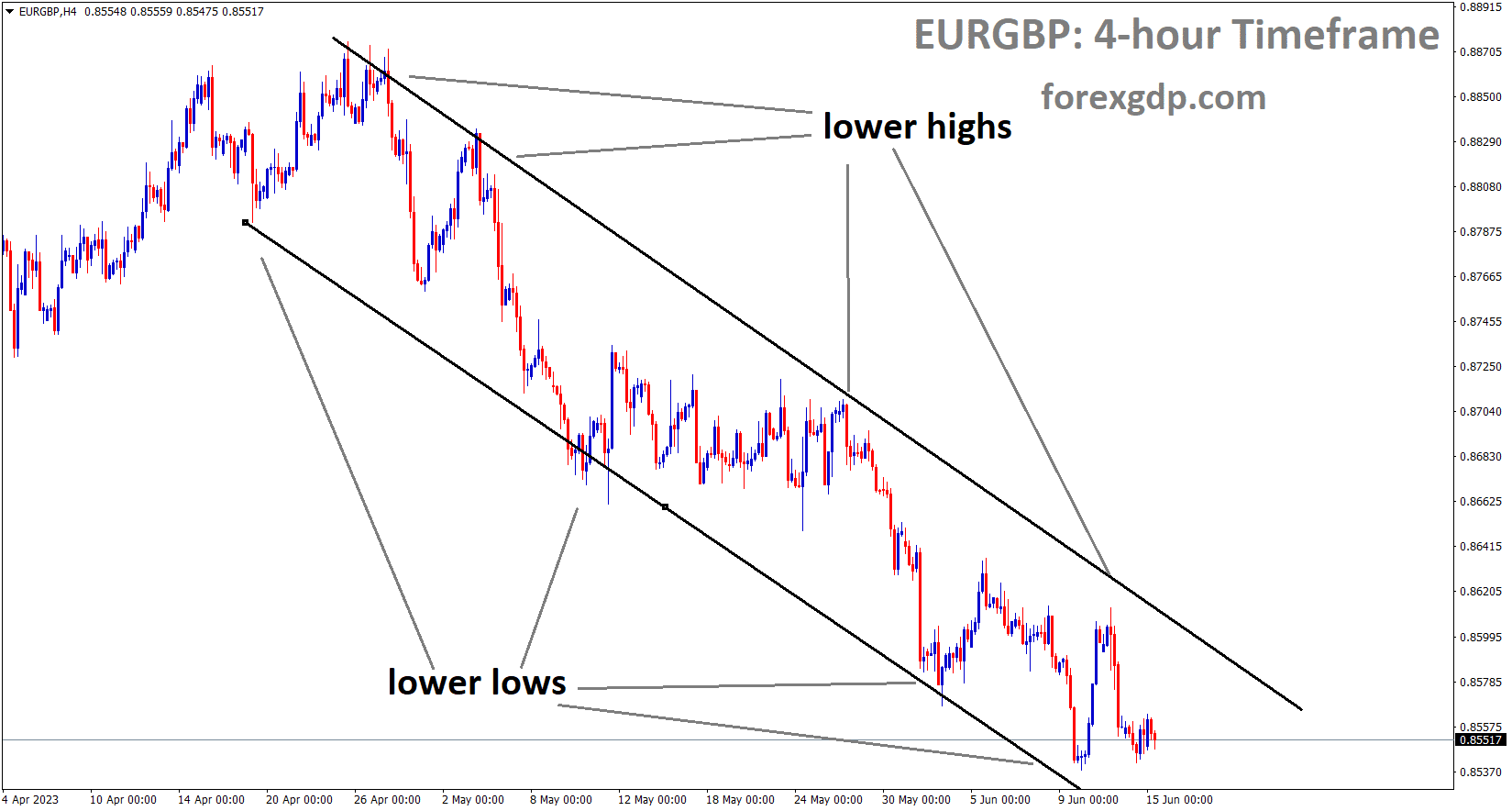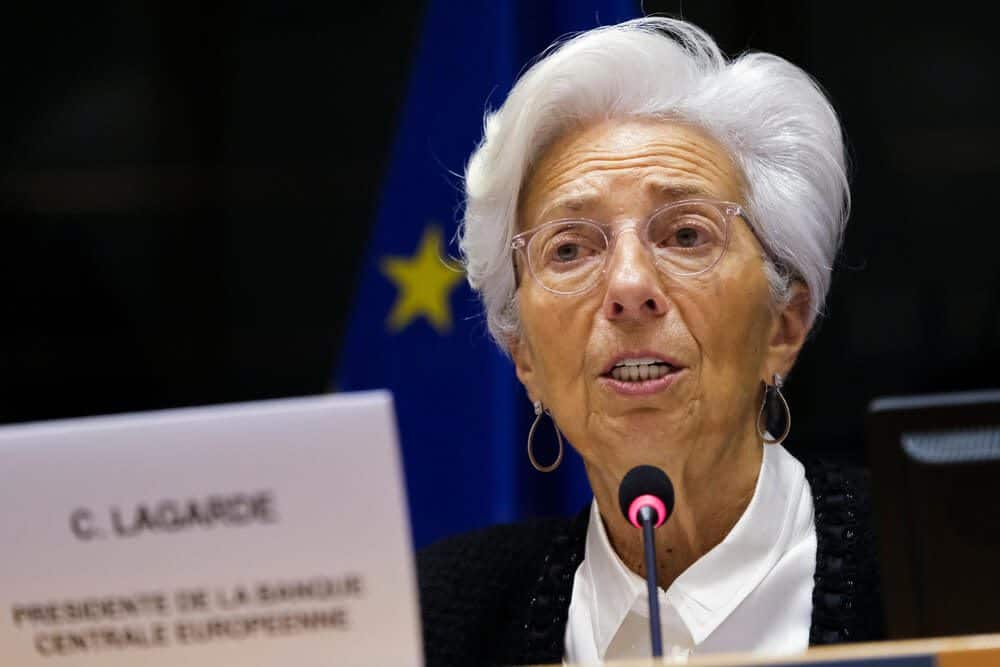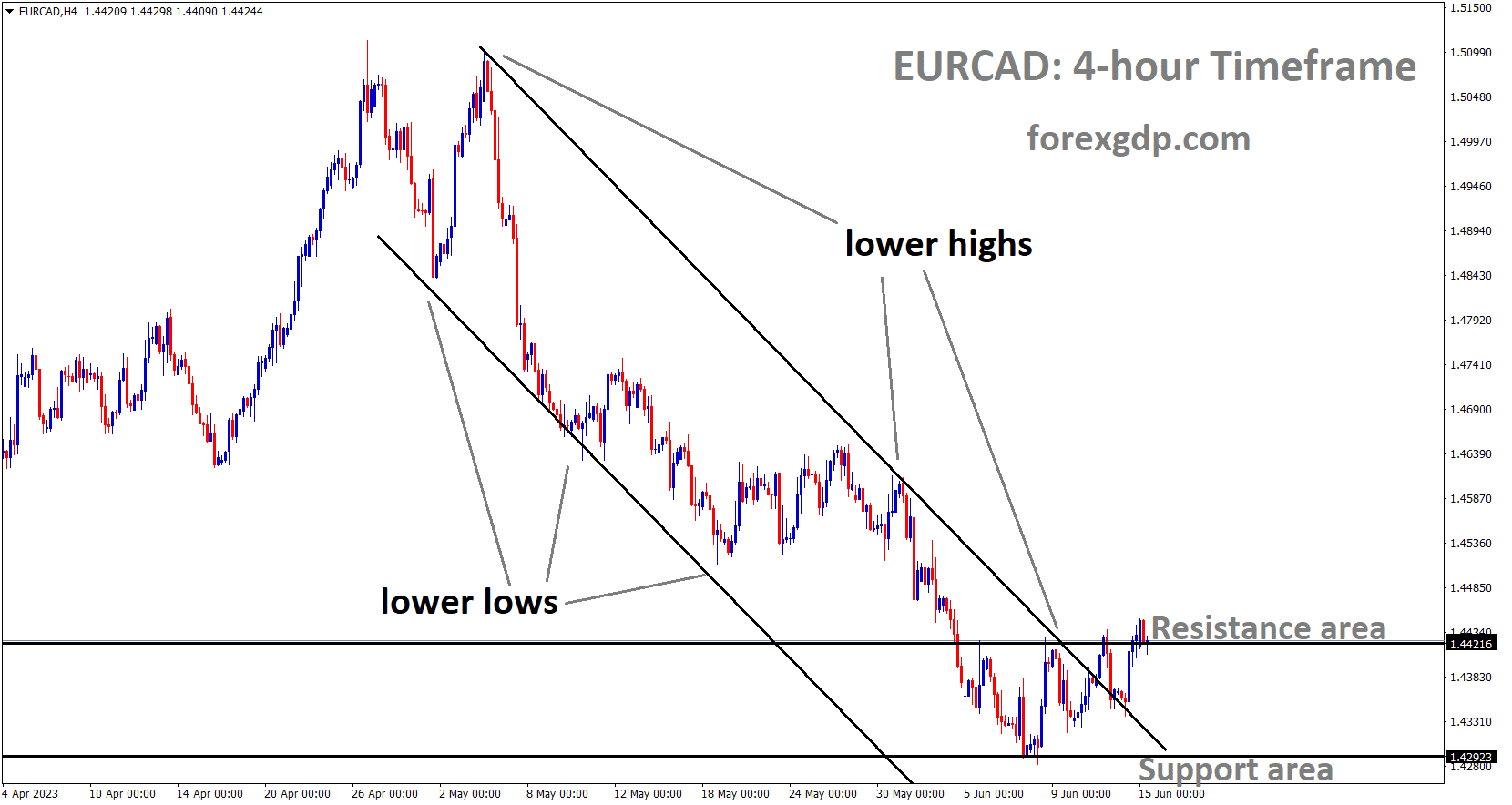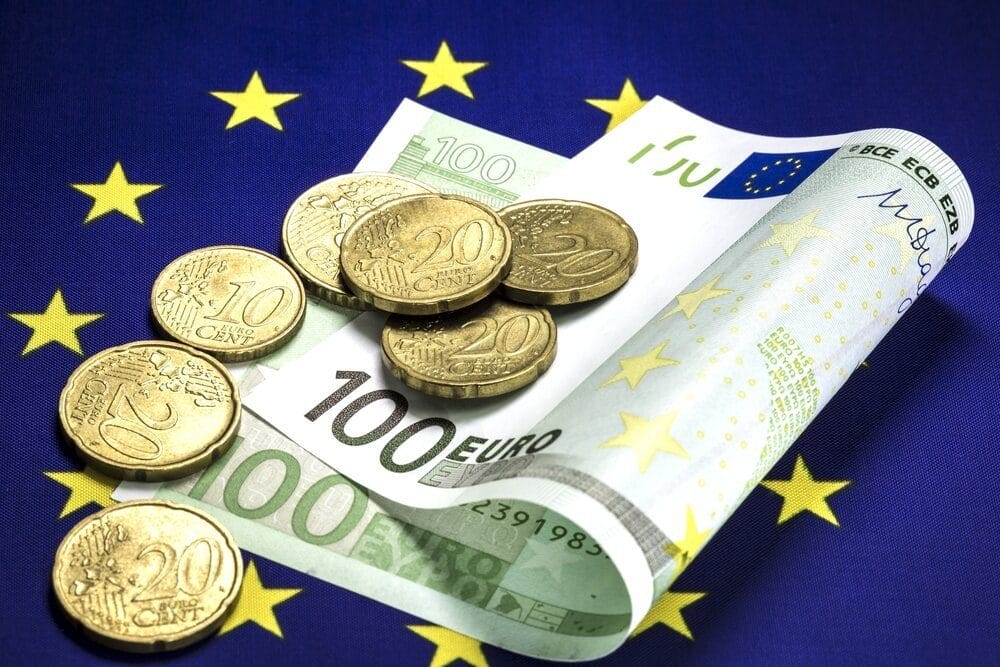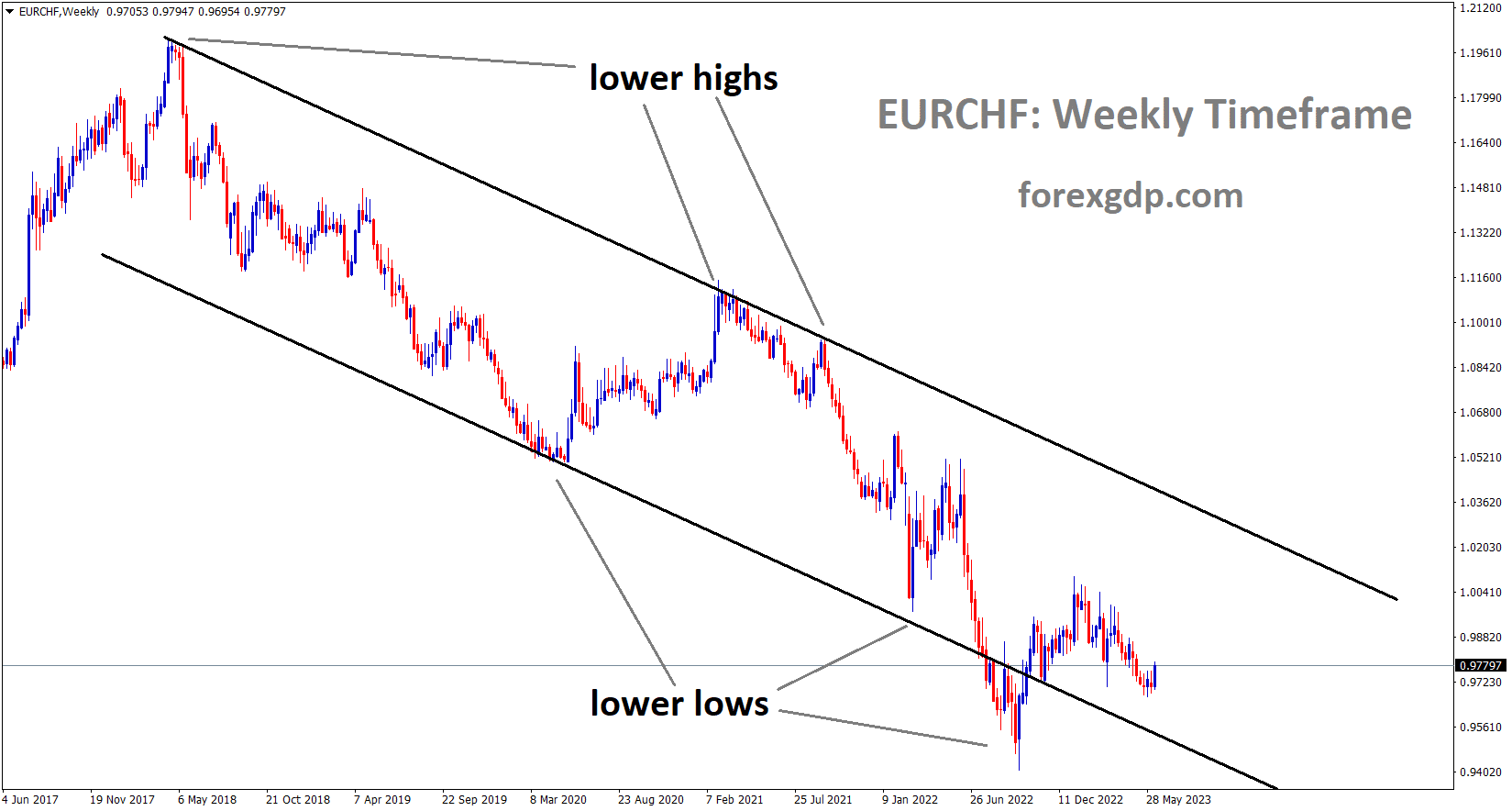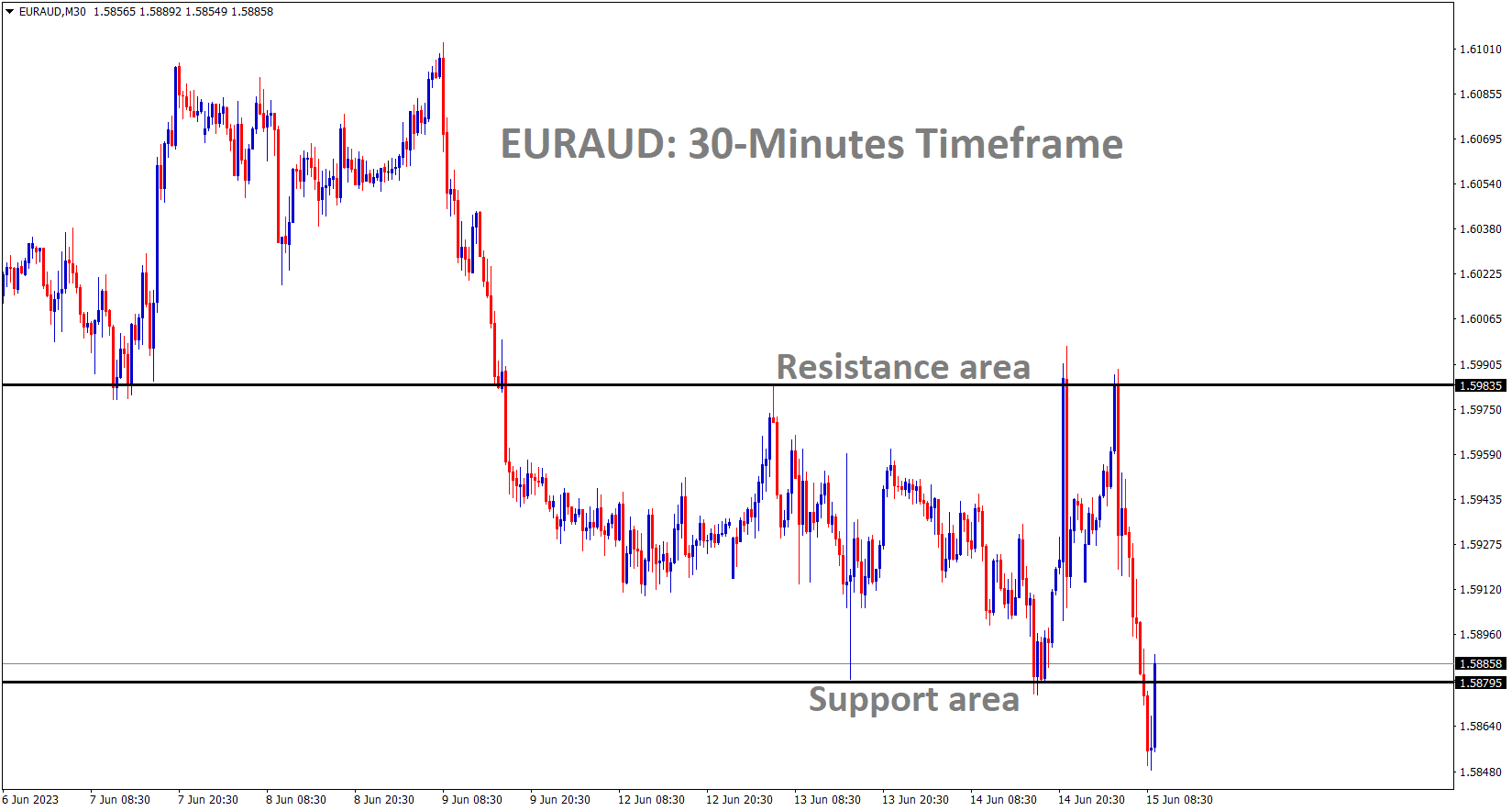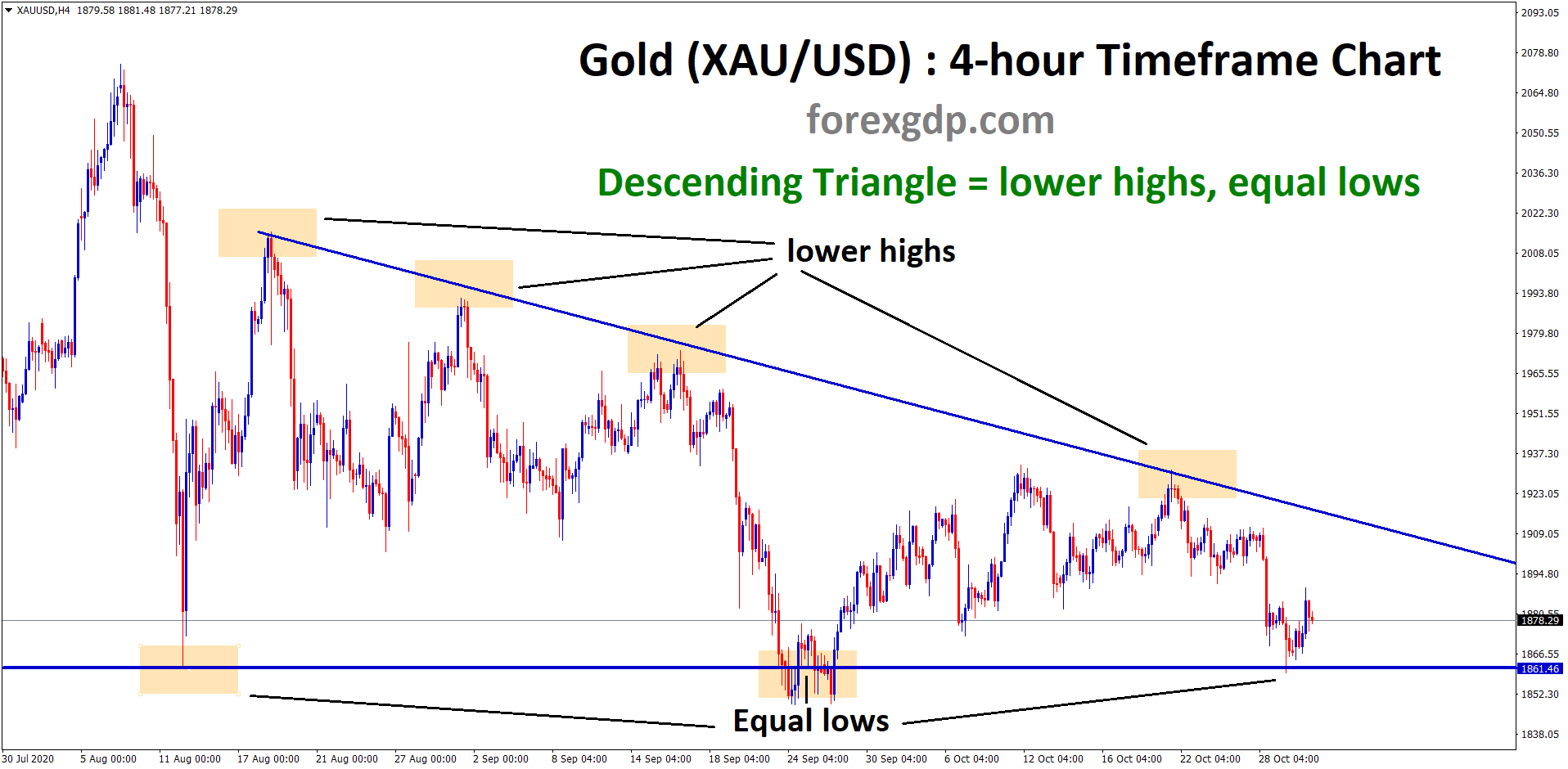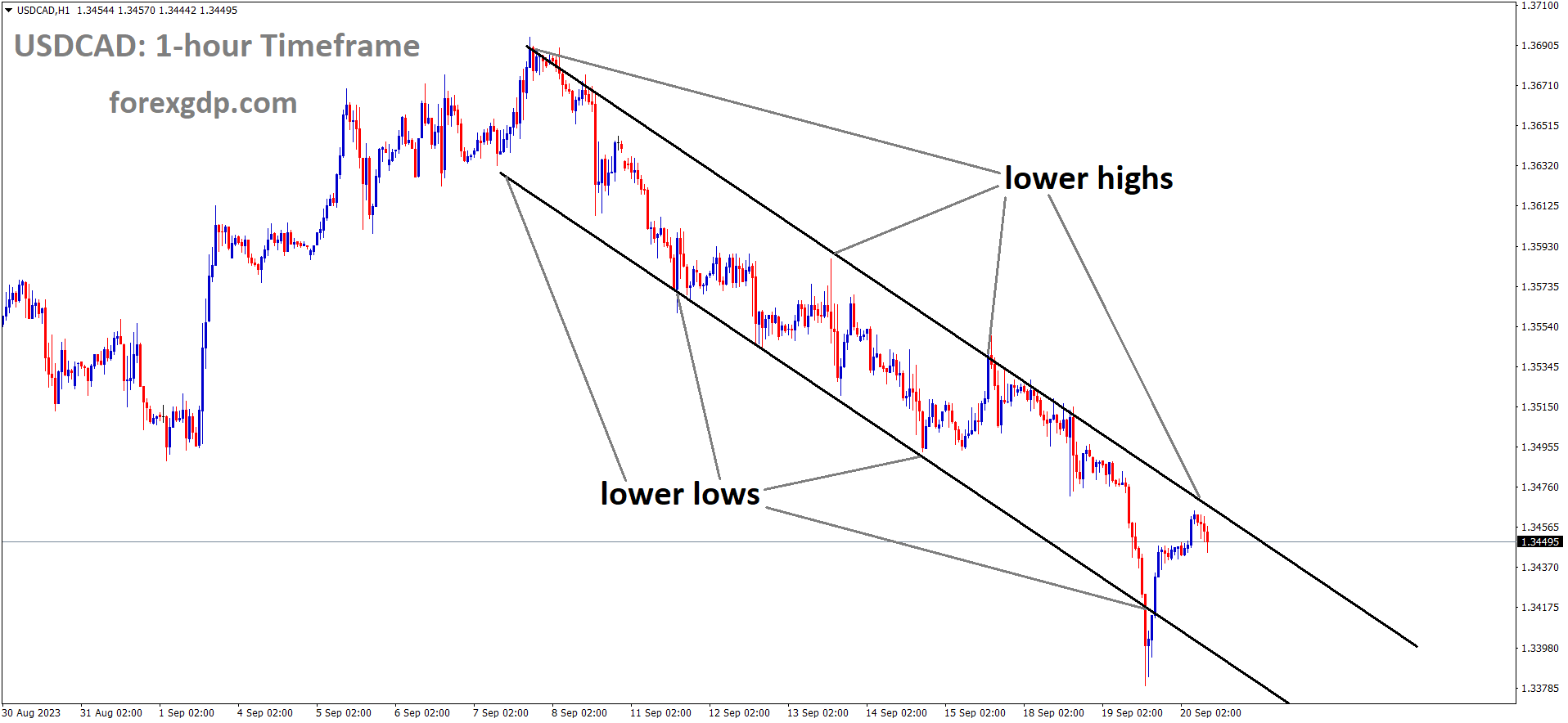EURUSD is moving in an Ascending channel and the market has fallen from the higher high area of the channel
The ECB has decided to increase interest rates by 25 basis points during this week’s meeting. Inflation in the month of May has recently decreased to 6.1% from its peak of 10.1% last year. With the rise in wage growth and employment rates, the ECB deems it necessary to implement a rate hike in order to reach its target inflation rate of 2-3%.
ECB has been actively combatting inflation through a series of interest rate hikes, despite the eurozone experiencing a recession. The ECB’s efforts have shown some impact on inflation, but with the 2% target still out of reach, policymakers continue to emphasize the need for further rate hikes. This article analyzes the ECB’s approach, considering the challenges of managing inflation while avoiding an economic downturn. Additionally, the role of economic forecasts and underlying inflation trends will be explored.
I. ECB’s Battle Against Inflation
A. The ECB’s interest rate hike strategy
The ECB has implemented multiple consecutive rate hikes since July, initiating an unprecedented campaign of monetary tightening. This approach was triggered by Russia’s war in Ukraine, which sent food and energy costs surging. The ECB aims to control inflation through these rate hikes.
B. Eurozone inflation trends
Eurozone inflation has exhibited a slowing trend, as evidenced by a decline to 6.1% in May, following a peak of 10.6% in October.
EURGBP Market is moving in the Descending channel and the market has reached the lower low area of the channel
While the ECB’s efforts have had an impact, the 2% inflation target remains out of reach.
C. Persistence in combating inflation
ECB President Christine Lagarde has expressed the need for continued rate hikes, emphasizing the importance of reducing inflation. Lagarde stated that rates were getting closer to the desired level but stressed the necessity to persevere.
A. Balancing borrowing costs and economic growth
The ECB faces the challenge of balancing the need to raise borrowing costs to dampen demand and tame inflation, without triggering a deep economic downturn. Striking the right balance is crucial to maintaining stability and sustained economic growth.
B. Eurozone recession and implications
Revised data revealed a surprising contraction of 0.1% in the eurozone for two consecutive quarters, meeting the technical definition of a recession.
EURCAD is moving in the Descending channel and the market has reached the lower high area of the channel and minor consolidation pattern.
This unexpected decline raises concerns about the region’s ability to handle the fallout from Russia’s war and casts doubt on optimistic predictions for 2023.
C. Resilience of the eurozone economy
Although the eurozone economy has proven to be less resilient than anticipated, economists believe that the disappointing data are unlikely to deter the ECB from its inflation-fighting agenda. The focus remains on bringing down inflation, despite the challenges posed by the recession.
III. Economic Forecasts and Inflation Trends
A. Importance of ECB’s economic forecasts
The ECB’s economic forecasts play a significant role in guiding its policy decisions. These forecasts provide insights into inflation projections and the expected timeframe for achieving the target rate.
Observers anticipate little change in the upcoming forecasts.
B. Factors influencing inflation
Rapidly falling energy prices and fading supply chain bottlenecks have contributed to easing inflation in recent months. However, prices for services remain high, partially due to strong demand in the tourism sector. These factors continue to impact inflation dynamics in the eurozone.
C. Core inflation and its significance
Policymakers closely monitor core inflation, which excludes volatile food and alcohol prices, to gauge underlying inflation trends.
EURCHF is moving in the Descending channel and the market has rebounded from the lower low area of the channel.
Despite some slight easing, core inflation remains stubbornly high in the eurozone. The most recent forecasts indicate a core inflation rate of 2.2% in 2025, suggesting a need for further attention to this aspect.
IV. Addressing Underlying Inflation and Future Policy
A. Wage-driven inflation concerns
ECB officials express concerns about wages becoming a significant driver of inflation. With record-low eurozone unemployment rates, workers may demand salary increases to offset higher living costs. These demands could contribute to ongoing inflation pressures.
B. ECB’s stance on underlying inflation
ECB President Lagarde warned that there is no clear evidence indicating a peak in underlying inflation.
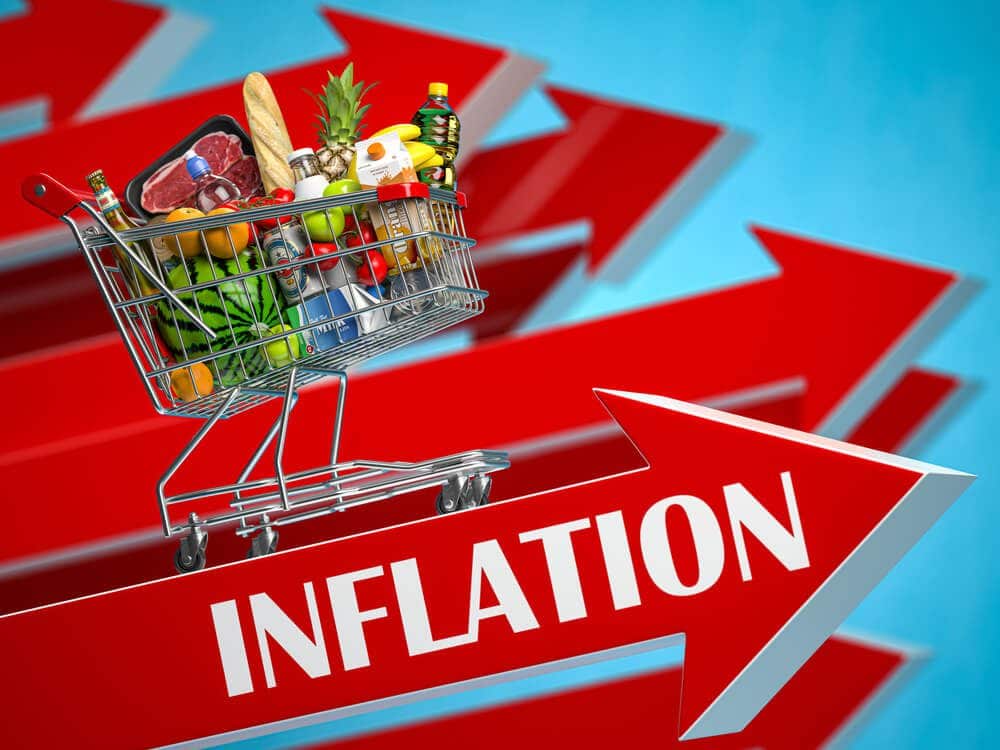
Policymakers await robust evidence of a slowdown before considering any changes in the rate-hiking cycle. This cautious approach underscores the ECB’s commitment to price stability.
C. Speculations on future rate hikes
Analysts anticipate that the ECB may hint at another 25 basis-point rise in July, further emphasizing that rates will remain high for a prolonged period.
EURAUD is moving in the box pattern and the market has rebounded from the horizontal support area of the pattern.
This expectation reflects the ECB’s determination to combat inflation and achieve its target rate in the long run.
Conclusion
The European Central Bank’s fight against inflation through a series of interest rate hikes remains steadfast, despite the eurozone experiencing a recession. The ECB’s efforts have shown some positive impact on inflation, but the target of 2% remains elusive. Policymakers continue to stress the need for further rate hikes to address underlying inflation trends. The ECB’s economic forecasts play a crucial role in guiding their policy decisions. Balancing inflation control with economic growth remains a challenge, requiring the ECB to carefully navigate the fine line.
Don’t trade all the time, trade forex only at the confirmed trade setups.
Get Live Free Signals now: forexgdp.com/forex-signals/

